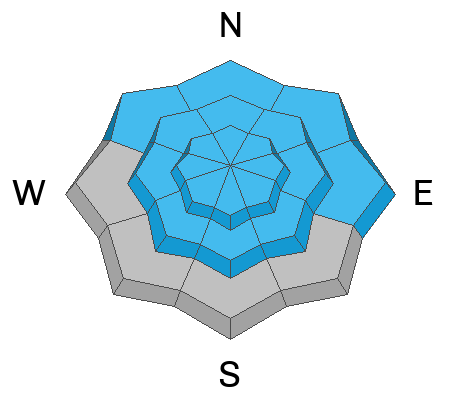Thanks for showing up Tuesday night and supporting the UAC. It was great to see everybody at the Cache! You made our annual Pray for Snow party/fundraiser a big success.
Join the Utah Avalanche Center and the Division of Outdoor Recreation to celebrate the Fourth Annual Avalanche Awareness week, from December 4 - December 11. Click
HERE to view the full list of events for the week.
Today's Beacon Clinic location has been moved. Due to the early opening of Beaver Mountain and adequate snow in the valley, the clinic will be held at USU Aggie Legacy Fields on the north side of the USU ARC. Parking is to the east of the fields.
Last week's heavy snow and drifting overloaded many slopes plagued by buried weak layers and poor snow structure. Dangerous human-triggered avalanches remain possible for people to trigger, especially on previously drifted upper and mid-elevation slopes. Fresh drifts could be very sensitive and we can expect to see people triggering avalanches of wind-drifted snow today at upper elevations. It's possible that a small avalanche overrunning a slope with poor snow structure could step down into sugary November snow and create a much larger hard-slab avalanche.
Although much less frequently in the last few days, observers continue to report localized audible collapses or "wumpfs" from across the zone. Collapsing indicates unstable snow and real potential for dangerous slab avalanches failing on a buried persistent weak layer.
This morning, temperatures are in the upper teens and low 20° Fs. Skies are overcast and winds are blowing from the west-southwest at speeds of 15-25 mph with gusts near 35 mph.
Today, skies will remain overcast and the temperatures will climb into the upper 20° Fs. It will continue to be rather breezy throughout the day, with 15 to 25 mph southwesterly winds, and gusts around 35 mph.
Avalanche danger will surely rise later this weekend, as a prolonged period of snowy weather is expected to begin Saturday night through early next week. This storm brings the potential for substantial accumulation.
No new avalanches were reported in the backcountry since last weekend when several remotely triggered and some large natural avalanches were reported.
Yesterday, observers noted obvious red flags from
Steam Mill, including large "whumps" and obvious wind transport occuring.
Several people ventured into the backcountry terrain on the Beaver Backside on Wednesday and some reported collapsing, but no avalanches were reported from the area.
Remember, when you leave the ski area, you are entering the backcountry and you could trigger dangerous avalanches.
***See our updated list of observed avalanches from across Utah
HERE 






